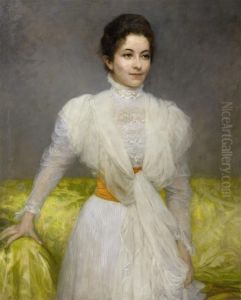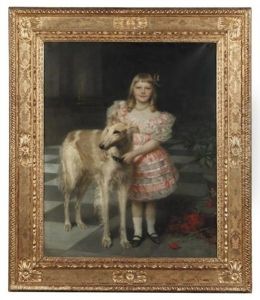Sophie Koner Paintings
Sophie Koner was a German painter and graphic artist born in 1865 in Hirschberg, Silesia, which is now Jelenia Góra in Poland. Her artistic journey began in an era when women were largely marginalized in the arts, facing significant barriers to both education and professional recognition. Despite these challenges, Koner's talent and determination allowed her to carve out a notable career in the late 19th and early 20th centuries, a period rich with artistic innovation and exploration.
Koner received her initial art education in Berlin, where she studied under several prominent artists of the time. Her style was largely influenced by the prevailing trends of realism and naturalism, but she also exhibited a keen interest in exploring the emotional and psychological depth of her subjects, which later contributed to the unique character of her work. Koner's oeuvre includes portraits, landscapes, and genre scenes, executed with a sensitivity to light, color, and detail that lends her work a distinctive, evocative quality.
Throughout her career, Sophie Koner exhibited her work widely, participating in numerous exhibitions across Germany and beyond. Her paintings were celebrated for their technical skill and emotional depth, earning her a place among the notable female artists of her time. Despite facing the societal limitations imposed on women artists during her lifetime, Koner's work achieved recognition and respect, contributing to the gradual opening of the art world to more female artists.
Sophie Koner's legacy is that of a pioneering woman artist who navigated the challenges of her era to produce work that was both deeply personal and broadly appealing. She died in 1926, leaving behind a body of work that continues to be studied and admired for its artistic merit and historical significance. Koner's life and work remain an inspiring example of resilience and creativity in the face of adversity, reflecting the broader struggles and achievements of women in the arts during the late 19th and early 20th centuries.



